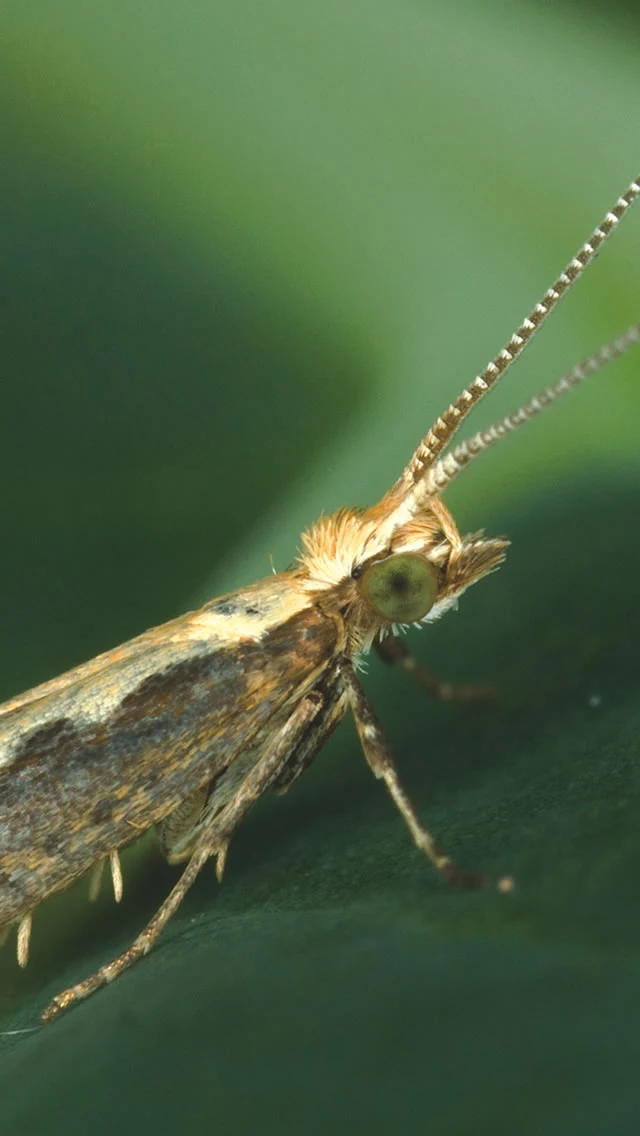
Diamond-back Moth
Plutella xylostella

Plutella xylostella
Identification
This small moth, with a wingspan of 12-15 mm, folds its dark brown wings over its abdomen in a tent-like fashion. When viewed from above 3 diamond shaped patterns can be seen on the apex which are less distinct in the female. When fully grown the caterpillar is 12-15 mm long and is a light yellow/green colour.
When disturbed the caterpillars wriggle backwards vigorously and drop onto the ground on silk threads, only to climb back up the plant to resume feeding within a short while.
Symptoms
Diamond-back moths are a major pest of brassica crops. They feed on all parts of the plant and damage to the leaves can be seen as ‘window-paning’. They can also tunnel into the heart of cabbages and sprouts.
In oilseed rape or mustard, the leaves, buds, flowers and pods can all be consumed.
Life-cycle
Adult females can lay up to 250 eggs which can hatch within 2-8 days. The caterpillars then pass through four instars in a period lasting up to 30 days. Throughout this time they feed on the undersides of leaves before forming cocoons which are attached to the plant under a protective webbing.
There can be 2-3 generations over the summer period. The adults are mostly active at night and lay eggs on the stems and both sides of the leaves of host plants. Whilst these moths are poor flyers they can be carried on the wind over thousands of miles in a few days.
Importance
Diamond-back moth caterpillars feed exclusively on glucosinolate (mustard oil) producing cruciferous plants. Glucosinolates are responsible for the bitter taste found in brassica plants and these release chemicals such as isothiocyanates which can help to protect plants from being eaten.
Whilst only occasionally of importance in the UK, this is an economically important pest of brassica crops throughout the world especially in tropical or sub-tropical climates.
Threshold
Insecticides should be applied where populations are starting to build.
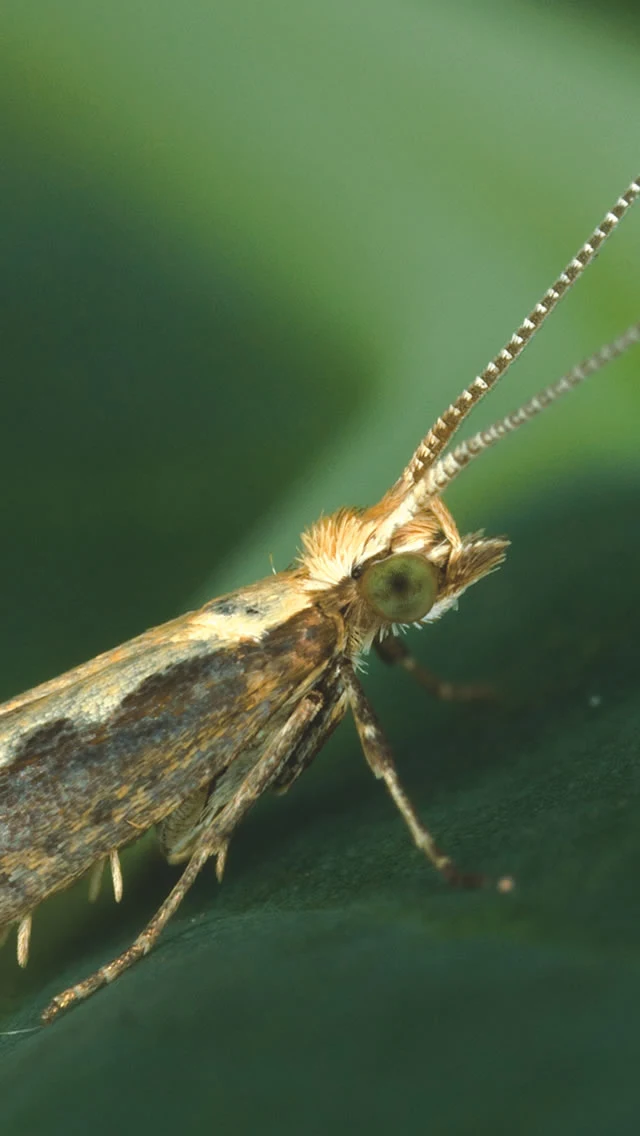
Diamond-back moth

Diamond-back moth larvae and damage
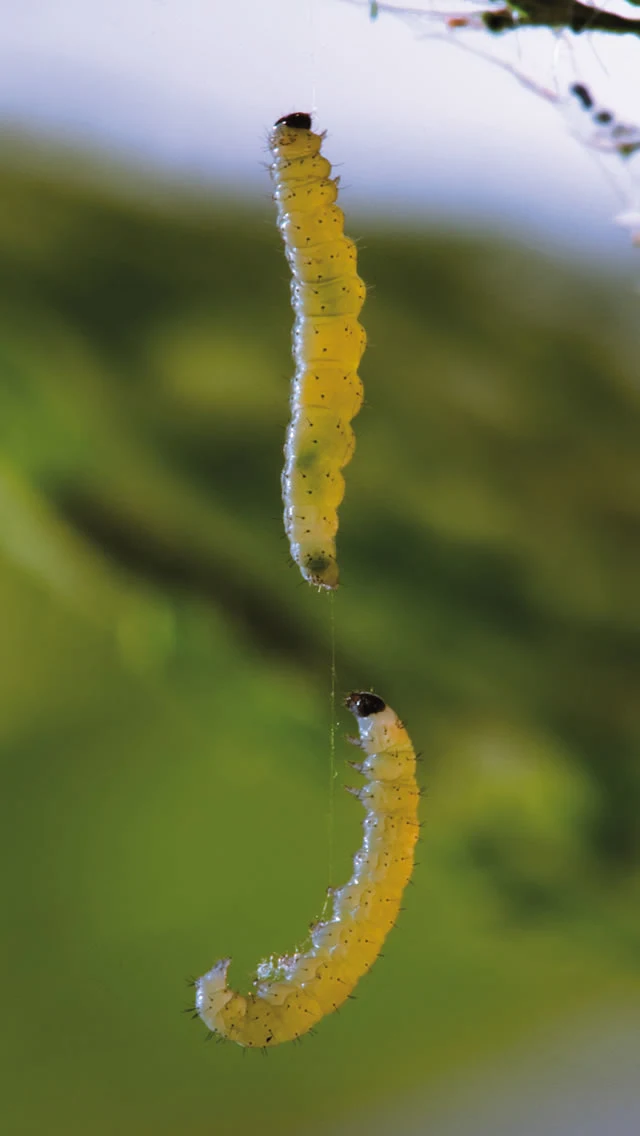
Diamond-back moth larvae and damage
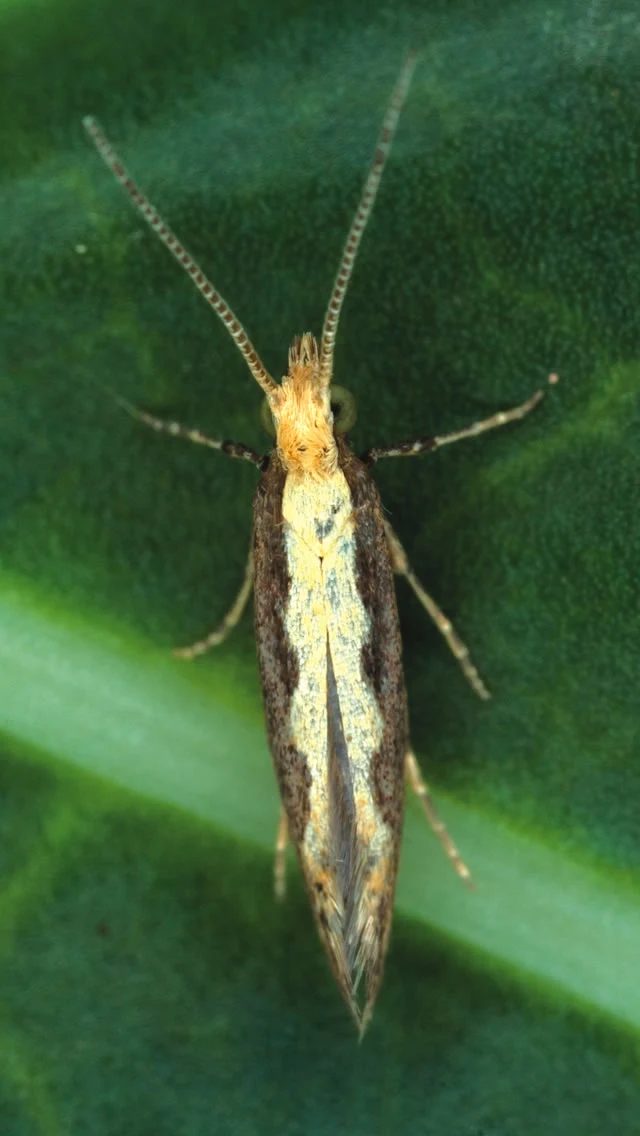
Diamond-back adult Inset shows 'diamond' shaped patterns on the wings
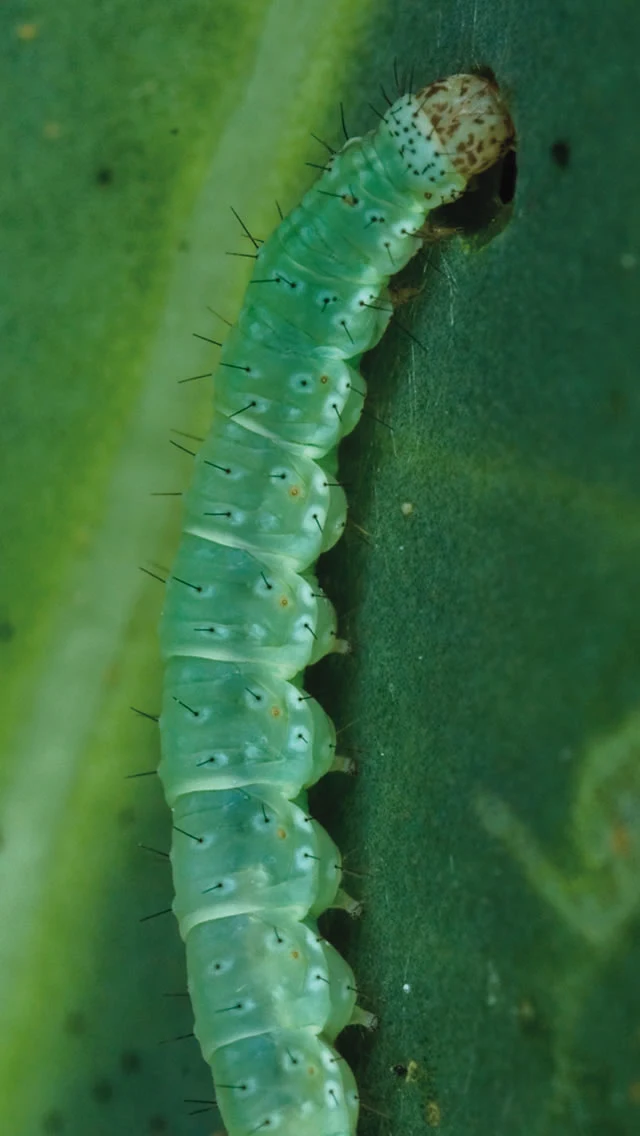
Diamond-back moth larva

Diamond-back moth


